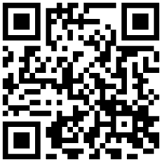6
月、
日本の
民間として
初の
月面着陸に
挑戦したものの
失敗した、
東京のベンチャー
企業「ispace」は24
日、
会見を
開き、
月着陸船の
高度を
測定するセンサーが
想定どおりに
作動せず、
着陸に
向けた
十分な
減速ができなかったことが
失敗の
原因と
明らかにしました
In June, Tokyo-based startup ispace, which attempted Japans first private lunar landing but failed, held a press conference on the 24th and revealed that the cause of the failure was that the sensor measuring the altitude of the lunar lander did not function as expected, resulting in insufficient deceleration for landing.
東京のベンチャー企業「ispace」が開発した月着陸船は、6月6日、月面着陸に失敗し、企業は24日、都内で会見を開いて、失敗の原因を説明しました
The lunar lander developed by Tokyo-based venture company ispace failed to land on the moon on June 6. On the 24th, the company held a press conference in Tokyo to explain the cause of the failure.
それによりますと、月着陸船から送られてきたデータを解析した結果、「レーザーレンジファインダー」と呼ばれる高度を測定するセンサーが想定通りに作動せず、着陸に向けた十分な減速ができなかったとしています
According to this, analysis of the data sent from the lunar lander revealed that a sensor called a laser range finder, which measures altitude, did not function as expected, resulting in insufficient deceleration for landing.
センサーは、高度およそ3キロまでに測定を始める計画でしたが、実際には高度1キロ以下まで月面に近づいてから測定を開始していて、その時点で急激に減速したものの間に合わずに月面に衝突したということです
The sensor was planned to start measurements at an altitude of about 3 kilometers, but in reality, it began measuring only after approaching to less than 1 kilometer above the lunar surface. Although it decelerated rapidly at that point, it was not in time and ended up crashing into the lunar surface.
測定が遅れた理由については、センサーの性能が想定よりも低かった可能性など、複数の可能性を挙げていて、今後、JAXA=宇宙航空研究開発機構などの技術的な支援を受け、センサーを選ぶ際の基準や性能の確認方法を見直すということです
Regarding the reasons for the delay in measurement, several possibilities have been raised, such as the sensors performance being lower than expected. Going forward, with technical support from organizations like JAXA Japan Aerospace Exploration Agency, they plan to review the criteria for selecting sensors and methods for confirming their performance.
企業は2年後の2027年に輸送量を大幅に増やした新型の月着陸船を打ち上げる計画ですが、現時点で計画に変更はないとしています
The company plans to launch a new lunar lander with a significantly increased payload capacity in 2027, two years from now, and says there are currently no changes to this plan.
「ispace」の袴田武史CEOは「今回を単なる失敗に終わらせず、会社を強くしていきたい」と話していました
Takashi Hakamada, CEO of ispace, said, I dont want to let this end as just a failure—I want to make the company stronger.
月着陸船が衝突した場所か NASAが画像公開
東京のベンチャー企業「ispace」の月着陸船が月面着陸に失敗した際に衝突したとみられる場所の画像をNASA=アメリカ航空宇宙局が公開しました
The location where the lunar lander crashed: NASA releases image NASA the National Aeronautics and Space Administration has released an image of the site where the lunar lander of Tokyo-based venture company ispace is believed to have crashed after failing to land on the moon.
画像は月を周回するNASAの人工衛星が撮影したもので、過去に同じ場所を撮影した画像と比較すると、暗い影のように見える部分と、その周りの白く見える部分が新たにできたことが分かります
The image was taken by a NASA satellite orbiting the Moon, and when compared with images of the same location taken in the past, it can be seen that a part that looks like a dark shadow and a surrounding area that appears white have newly appeared.
NASAは、月着陸船が衝突した際に月の砂を巻き上げた痕跡だと分析しています
NASA analyzes that these are traces of lunar dust stirred up when the lunar lander crashed.








































